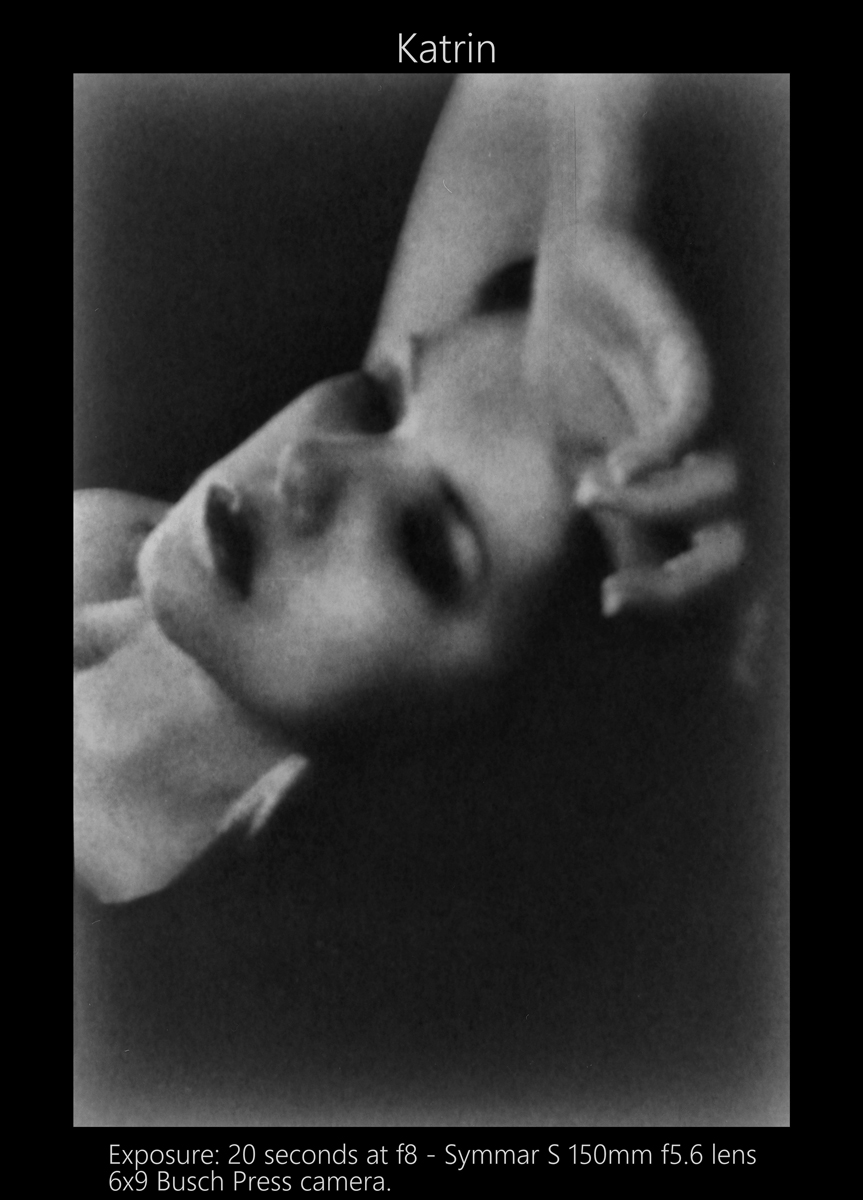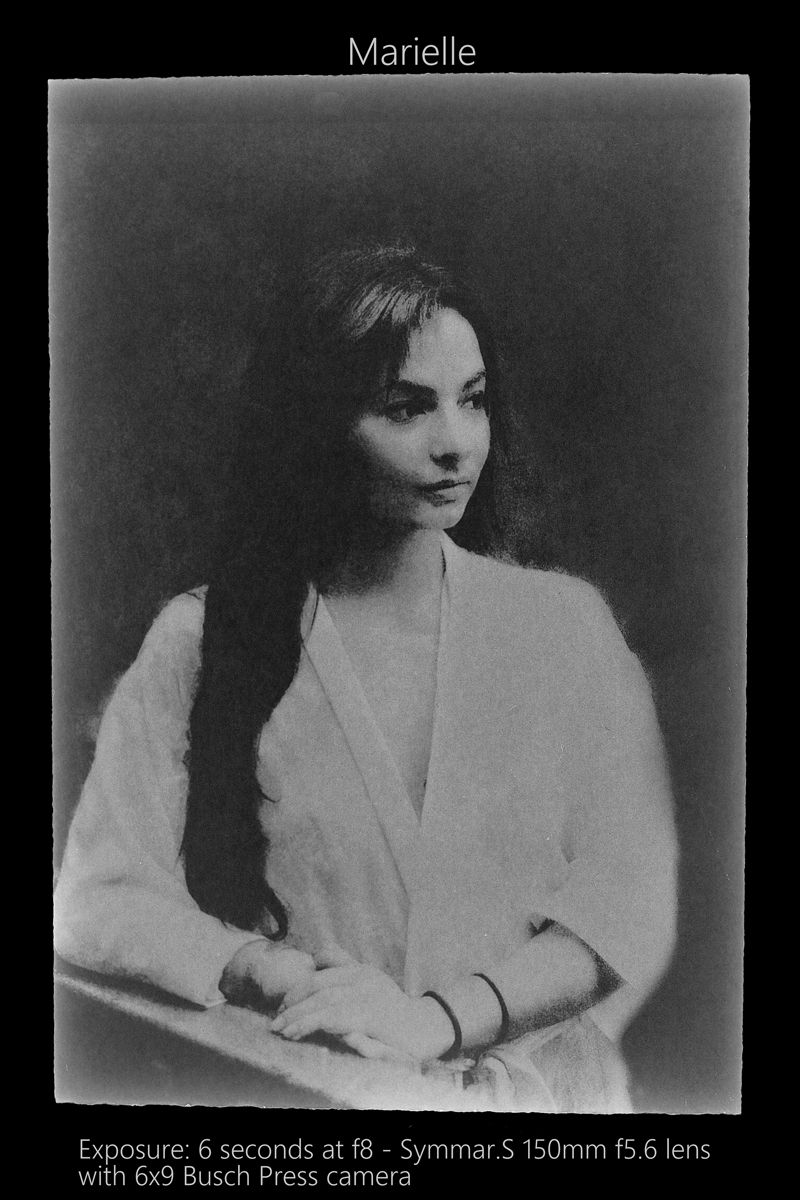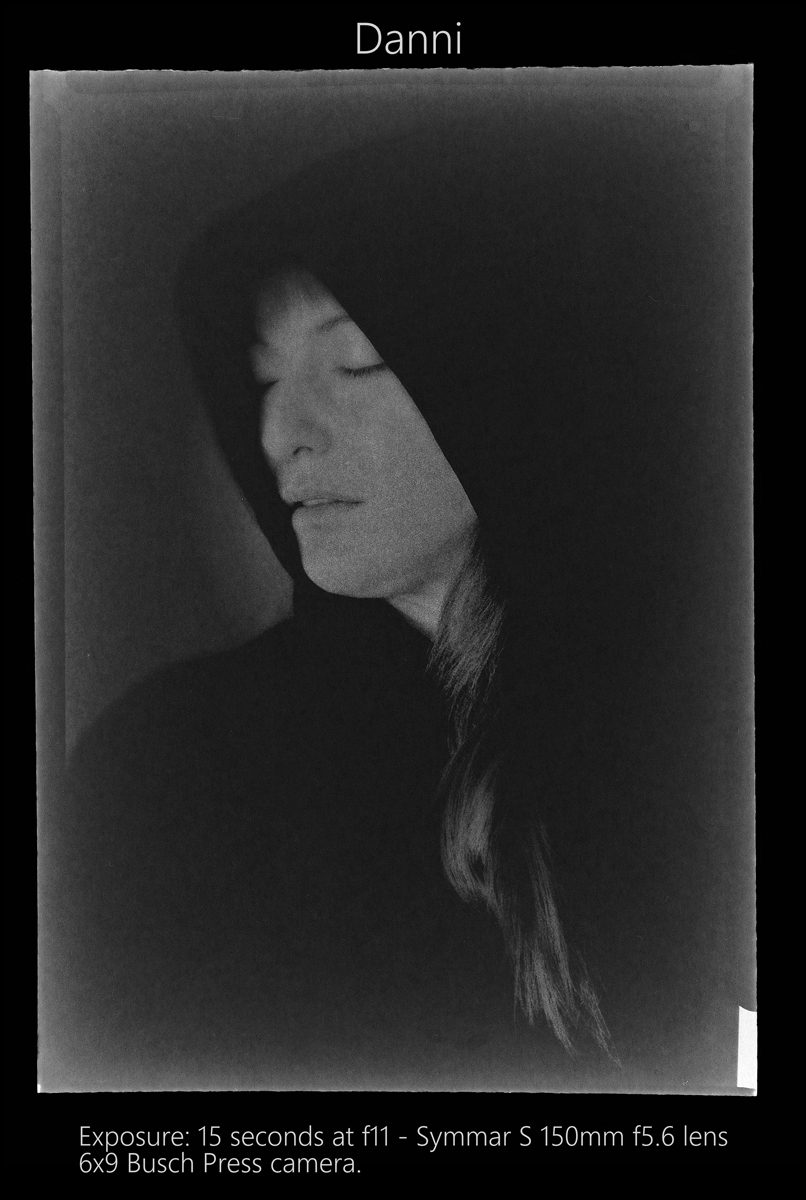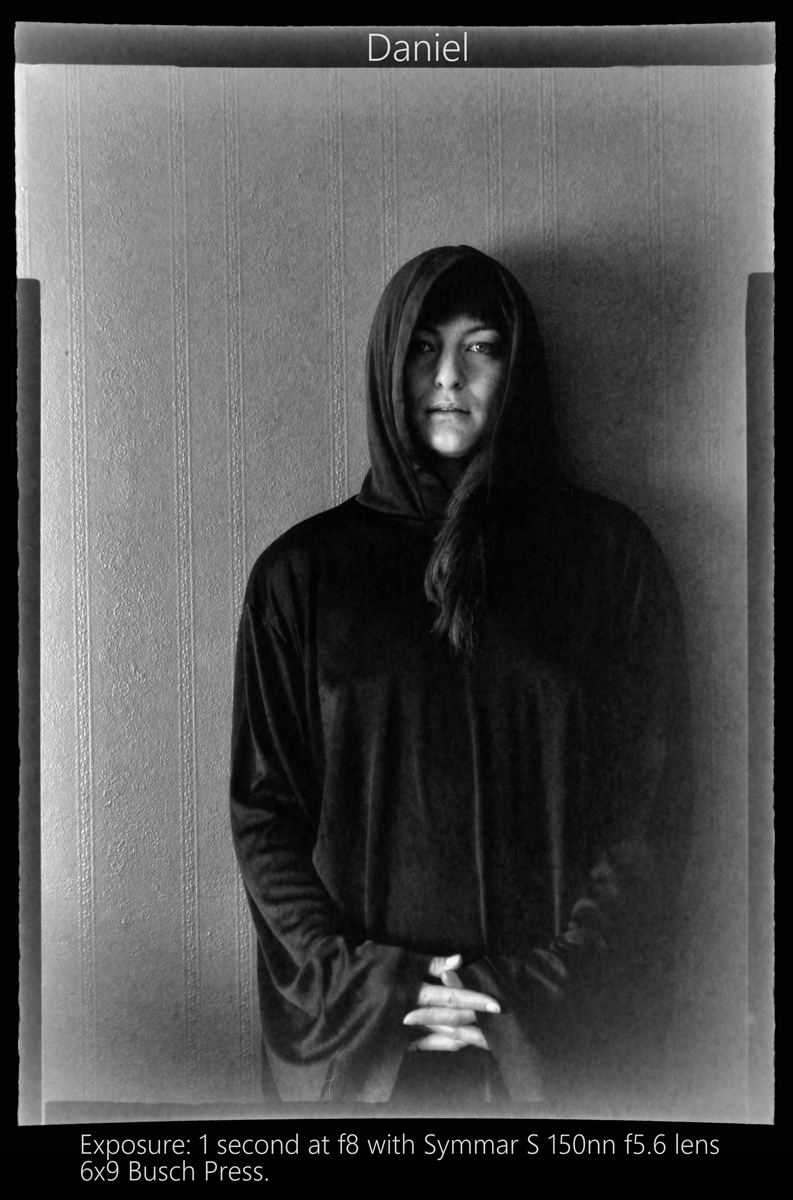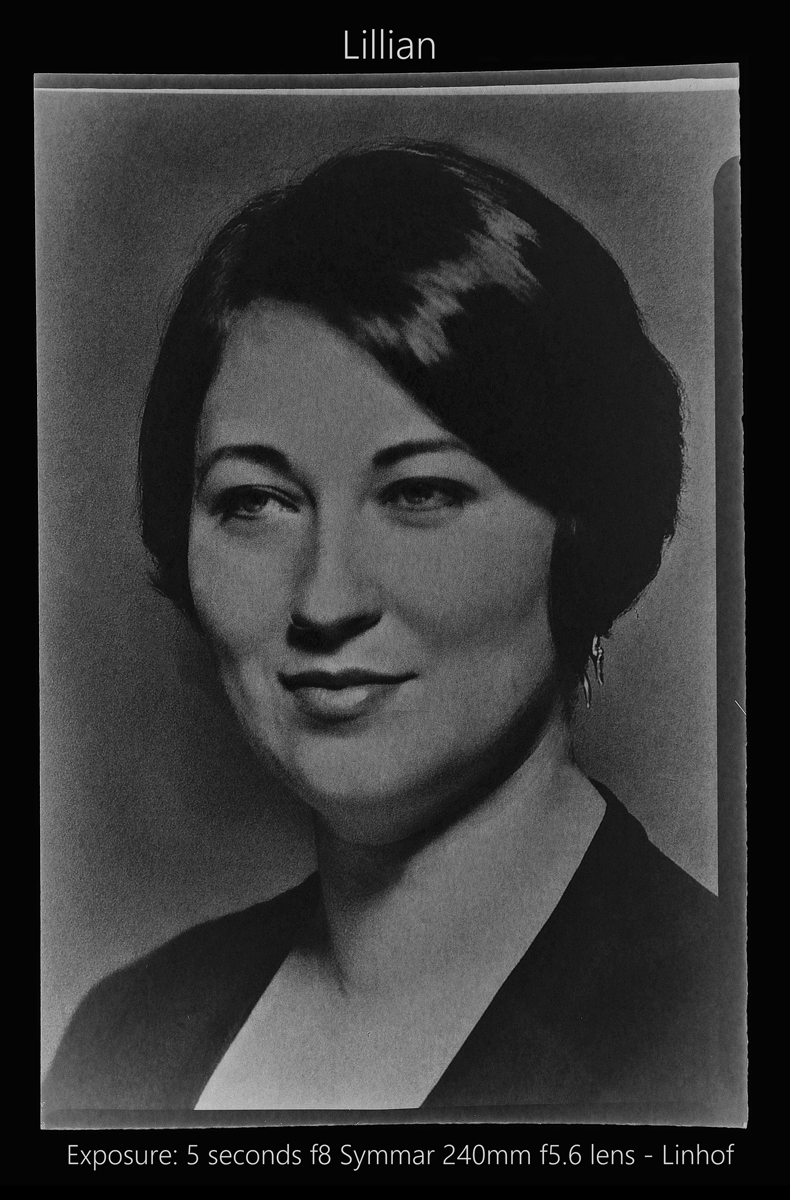Paper Negatives Posted On 1st September 2022 To Magazine, Technique & Stories

'Something Special'
There is a unique rendering to photographs made with Multigrade enlarging papers. It's difficult to define, maybe it's the timeless mood or perhaps it's the mystical feeling, or even a haunting aura... it's certainly there for me I like this very much!
Add to this, it's super economical and can be visually handled via darkroom safe-lights. No more fussing around in total darkness which often requires the use strong language! Humour aside, I find the physical involvement of handling the paper, trimming it, loading the holders and finally the hand processing gives me a direct tactile connection with the final image. This is just wonderful as apposed to the impersonal wizardry of digital.
The nuts and bolts
I primarily shoot with a vintage 6x9 Busch 'press' model camera. It's super light weighting at .6kg. I've fitted it with shutter less 150 f5.6 Symmar-S lense which easily covers 6x9 without vignetting. This gem of a camera also has more than adequate front standard movements along with a drop bed. My 4x5 is a Century Model 46 or 12 not sure which, it is was American made circa 1900. I've mounted a Copal 1 Fujinon 150mm f6.3 lens on it. This lens I like a big bunch!
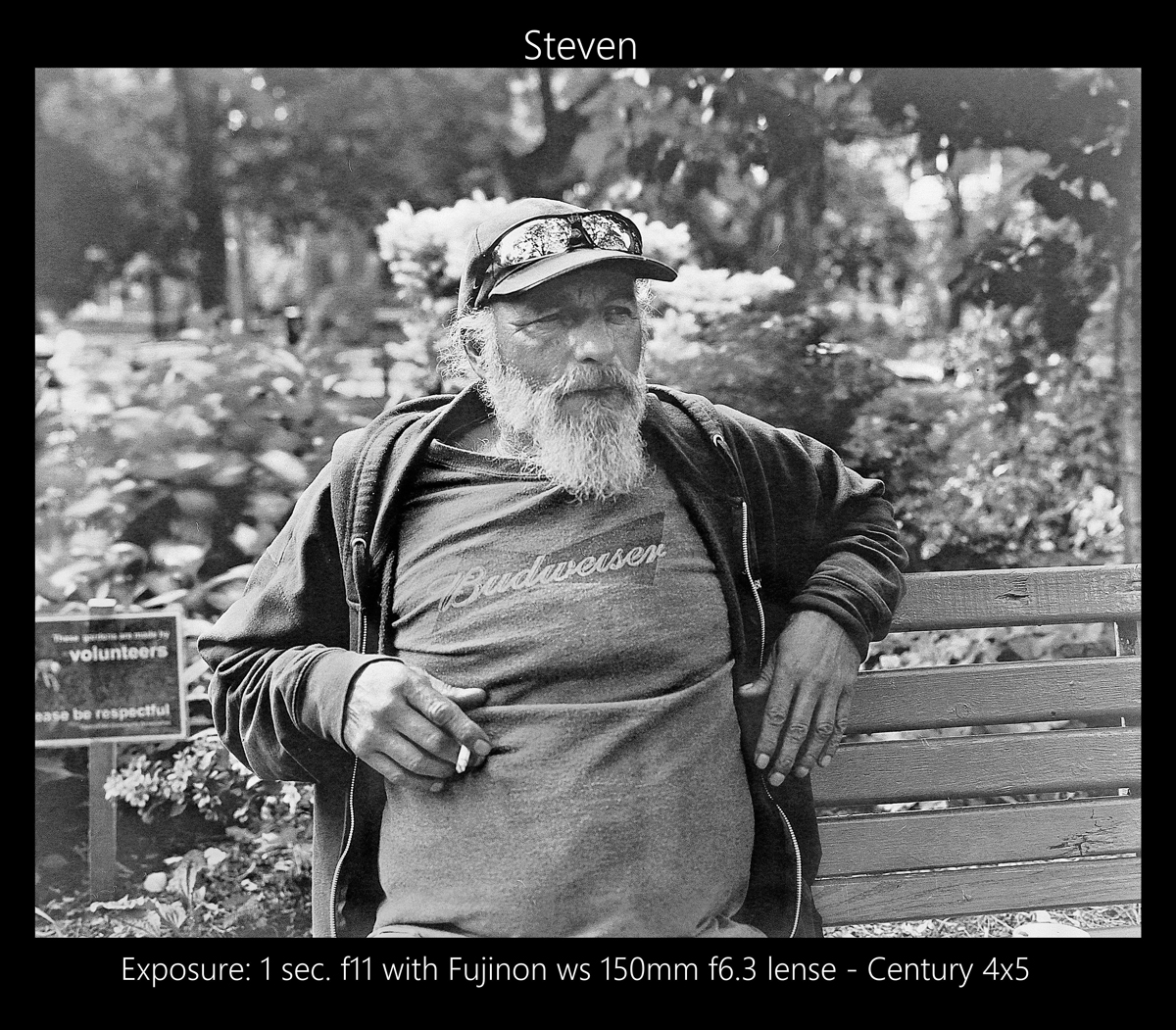
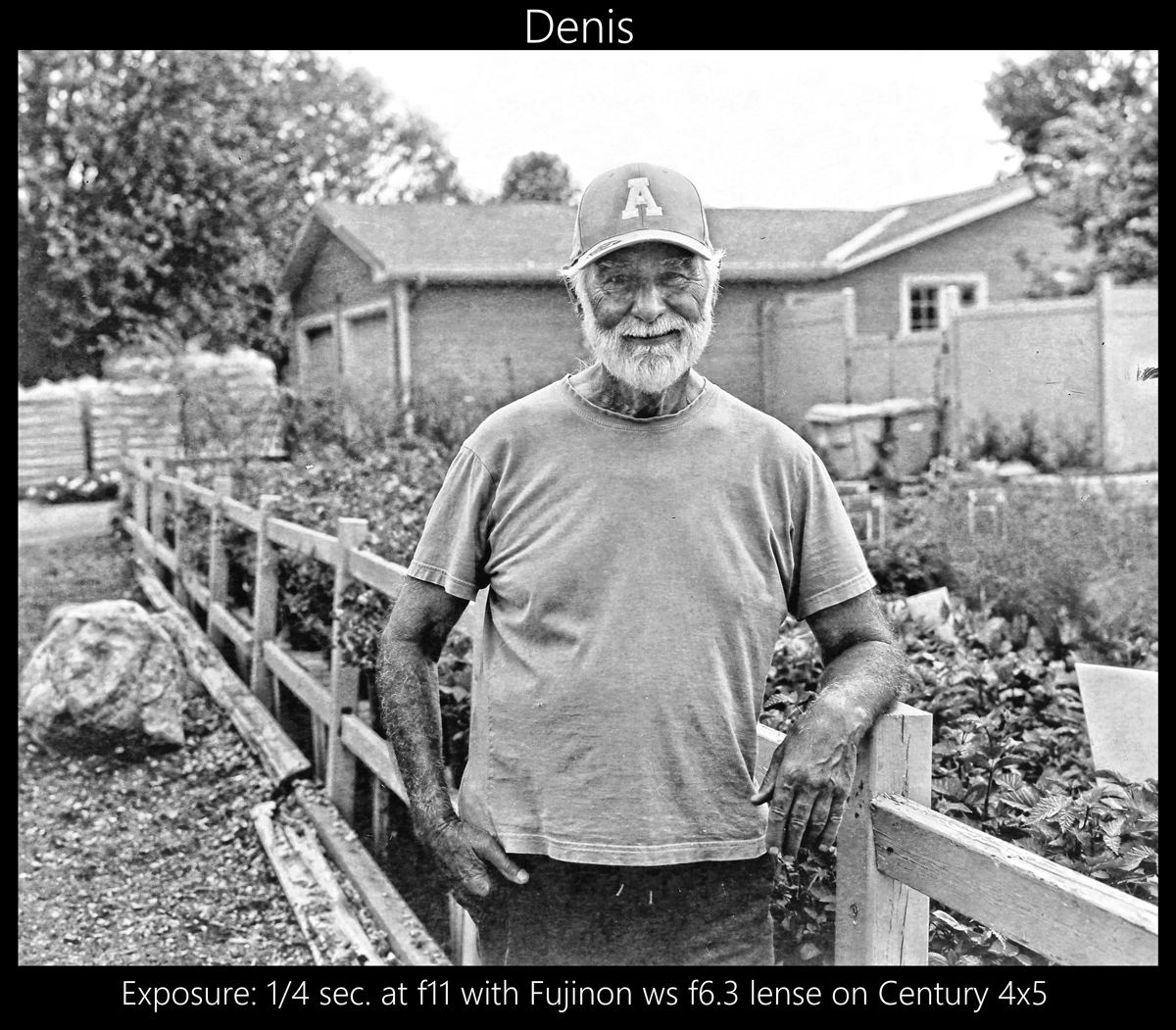
Denis-4x5-paper-negative
Lunasix F Meter
I use a Lunasix F meter 99% of the time with the incident dome in place. Worthy of mention, I'm very familiar with the zone system which has many devoted advocates, but for me, I need to work quickly and not be overly distracted by technical stuff. So, it's incident metering for me for portrait scenarios.
Being A Fearless Shooter
Most photographers shy away from shooting portraits of people with paper negatives for what seems like very good technical reasons. The effective ISO means slow shutter speeds along slow LF lenses all of this suggests blurred or out of focus junk.. Being a fearless shooter I decided to give it a go knowing the technical hurdles I'd have to deal with. While not without some failures I discovered how easy this was to get successful shots. The main issue is the subject moves during exposure. I found to my delight if my subjects knew they'd need to be still they had no difficulty in holding their pose. And I hope you'll agree that for the most part my subjects don't look unnaturally 'rigid'.
My First Choice
ILFORD Multigrade glossy surface is my first choice. It gives me an effective ISO of 9 when processed in aged ID-11 undiluted usually for about 3-3.5 minutes. I'd suggest 1:1 with freshly mixed developer. By the way I highly recommend mixing ID-11 with distilled water and add a drop or two a wetting agent, dishwasher soap is okay.
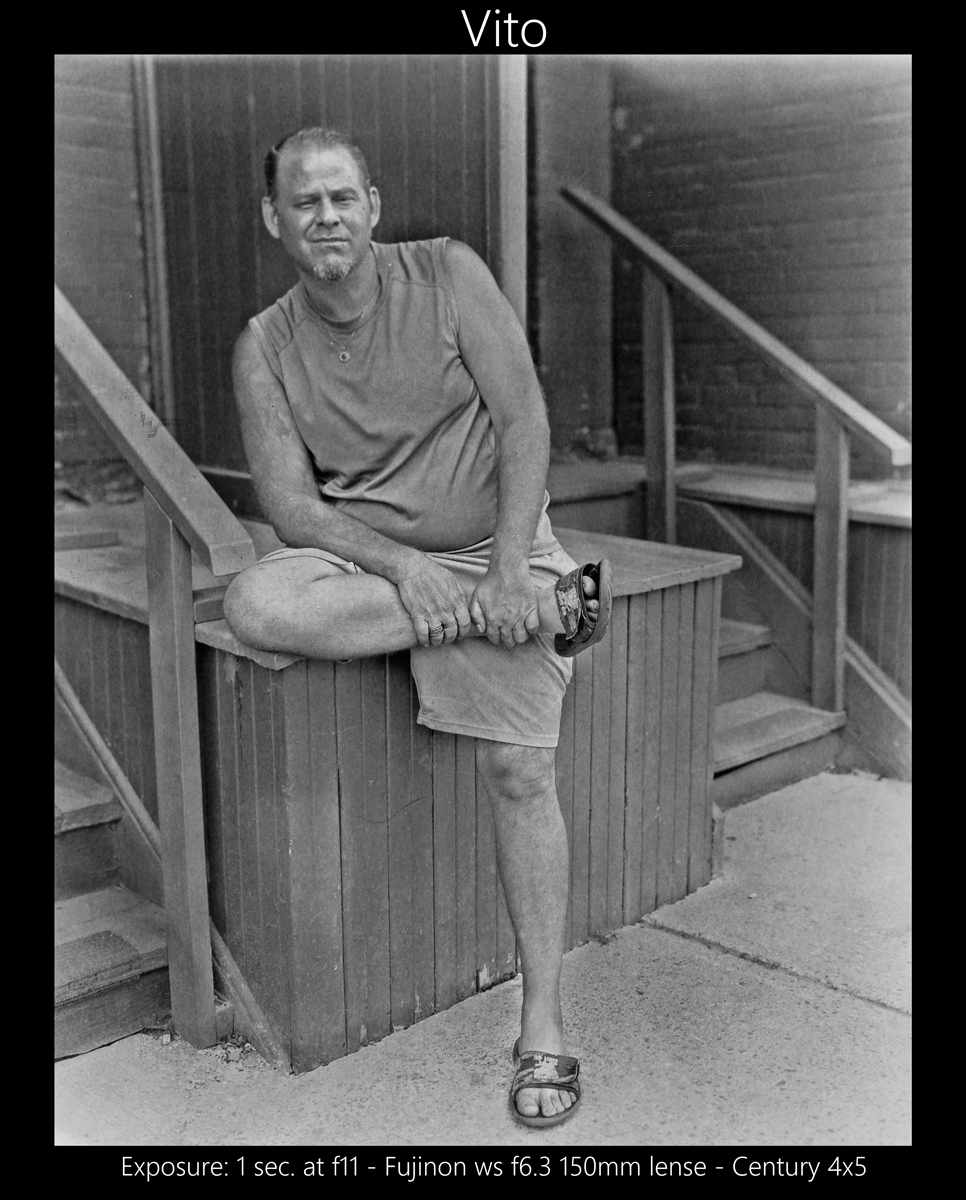
Vito-4x5-paper-neg
The secret of contrast control
I photograph the negative by transmitted light, never, ever with reflected light. I simply place the paper neg on a diffused light tablet and then photograph it with my digital camera fitted with a good macro lense. In my experience image files from a digital camera are significantly superior to the files from a $900 reputable flatbed scanner.
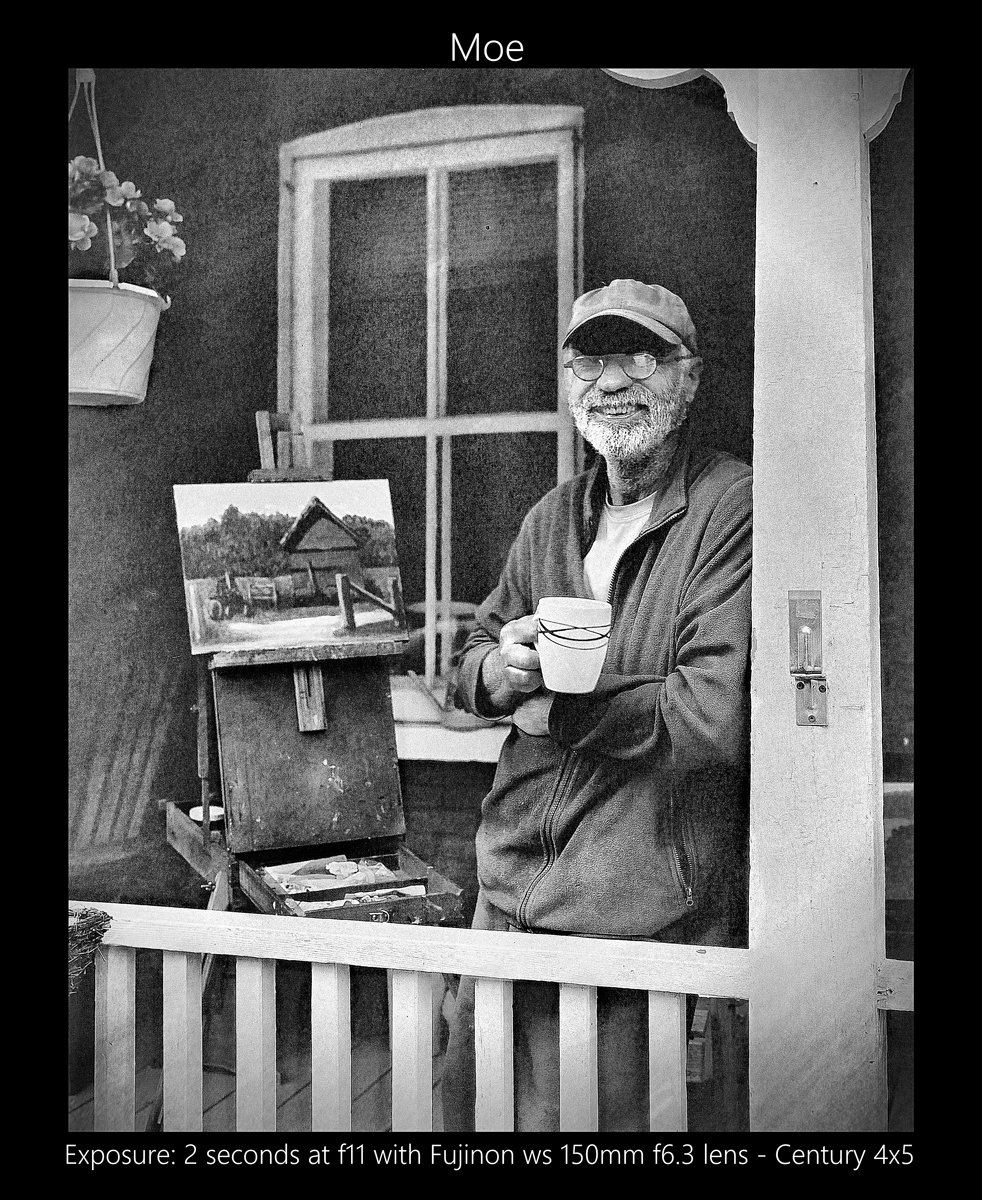
Moe-Wakefield
Get out shooting and discover for yourself the magic of b&w, it's you... not a computer chip.
About The Author

Crombie McNeill
Crombie McNeill may tell you he has retired, but gifted with the soul of a true artist, he is continuously seeking the perfect image. His career has transcended the boundaries of conventional photography and now with Karsh and Stieglitz looking over his shoulder, he is embracing the photo imaging techniques of the future. Not one to leave behind the uniqueness of b&w film with the quiet nostalgia of his wet darkroom. He’s discovered a special blending of traditional film with advanced digital techniques to produce truly unique images with a presentation biased to minimalism.
“The art photography for me,” says Crombie “is the blending of the ‘critical moment’ with the timeless essence of the painters canvas.”
Crombie McNeill’s career began in the mid 60’s as a staff news photographer but he soon turned freelance and embarked on a 30-year journey living out of a suit case. This Odyssey lead him from the North Pole to high fashion magazine shoots to Olympic Games; it lead from the depths of the Barrier Reefs to the heights with the Snow Birds, interwoven with civil war in Africa, Royalty, presidents and paupers world wide, not to mention frozen toes at the North Pole.
Crombie was engaged as an instructor at Loyalist, Heritage, Algonquin, Mohawk, and Sheridan Colleges, as well as a stint with the Nikon School of Photography.
The National Archives anticipates that Crombie McNeill will be credited as one of Canada’s most significant photographers in recognition of his longevity and the diversity of photographic assignments. His publication credits include National Geographic, Chatelaine, Maclean’s, Time, Newsweek, Fortune, Sports Illustrated, even Life Magazine and many others.
Crombie is now happily retired, in that he no longer accepts editorial assignments. He lives in Aylmer, with his wife Sue. “This retirement” he admits, “allows me to continue the search for the image, and to determine the ideal technique by which it is to be captured, presented and preserved for posterity,”
Crombie often returns to the peaceful amber glow of the wet darkroom as a respite from his extensive digital lab.







